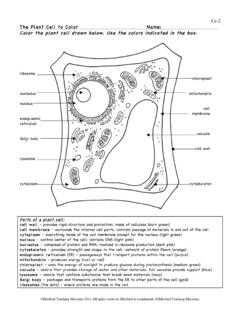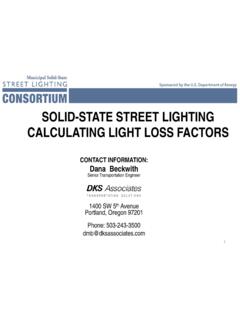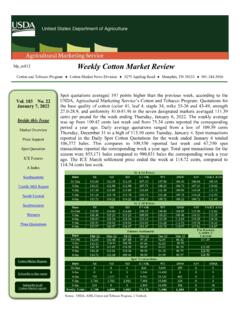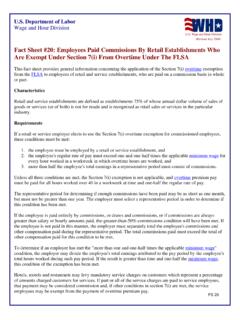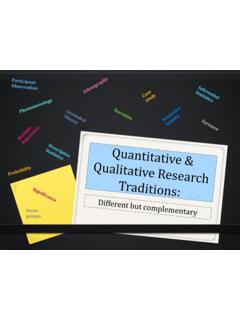Transcription of Transparent, Translucent, or Opaque?
1 Science Enhanced Scope and Sequence Grade 5 Virginia Department of Education 2012 1 Transparent, Translucent, or Opaque? Strand Force, Motion, and Energy Topic Investigating light Primary SOL The student will investigate and understand basic characteristics of light and how it behaves. Key concepts include c) opaque, transparent, and translucent. Related SOL The student will demonstrate an understanding of scientific reasoning, logic, and the nature of science by planning and conducting investigations in which a) items such as rocks, minerals, and organisms are identified using various classification keys. Background Information Objects vary in how they transmit light . Transparent objects allow light to travel through them.
2 Materials like air, water, and clear glass are called transparent. When light encounters transparent materials, almost all of it passes directly through them. Glass, for example, is transparent to all visible light . Translucent objects allow some light to travel through them. Materials like frosted glass and some plastics are called translucent. When light strikes translucent materials, only some of the light passes through them. The light does not pass directly through the materials. It changes direction many times and is scattered as it passes through. Therefore, we cannot see clearly through them and objects on the other side of a translucent object appear fuzzy and unclear. Opaque objects block light from traveling through them.
3 Most of the light is either reflected by the object or absorbed and converted to thermal energy. Materials such as wood, stone, and metals are opaque to visible light . Materials A variety of transparent objects, such as reading glasses, plastic wrap, light bulb (if you can see the filament inside clearly), plastic transparency, and water A variety of translucent objects, such as sunglasses, notebook paper, wax paper, stained glass, a lampshade, and vegetable oil A variety of opaque objects, such as a book, aluminum paper, upholstery fabric, and spoons Science journals or loose leaf paper Vocabulary transparent, translucent, opaque Student/Teacher Actions (what students and teachers should be doing to facilitate learning) Introduction Science Enhanced Scope and Sequence Grade 5 Virginia Department of Education 2012 2 1.
4 Lead a student discussion on the terms translucent, transparent, and opaque. Explain what they mean and provide examples of translucent, transparent, and opaque objects. 2. Create a chart on the board: Translucent Transparent Opaque 3. Place all of the items on a table in a central location. Pick up one of the items and discuss with the class whether it is transparent, translucent, or opaque and how we know. It lets light through, lets some light through, or lets no light through. 4. Write the name of the object identified under the appropriate column as you finish discussing the object. Have students write down the object under the appropriate column in their science journal or on loose leaf paper.
5 Complete this procedure for a few more items until it appears students understand the difference between transparent, translucent, or opaque objects. Procedure 1. Have the students come to the front table to test each object. Have them identify the rest of the items on their own. 2. Review where the items go and check the chart as a class once everyone has had a chance to complete the items on the table. 3. Using the large cards found at the end of this lesson, ask the students to go on a scavenger hunt in the classroom for a transparent, translucent, or opaque item as assigned to them by the card they are given. 4. Conduct the classroom scavenger hunt at least three times, doing an observation to check for items that demonstrate students are mastering the concept.
6 Conclusion 1. Conclude the activity with a discussion about the similarities and differences they noticed in objects that they found transparent, translucent, and opaque. Make sure students recognize that the way the light passes through or does not through pass through an object is the major distinction. Assessment Questions o What makes an object transparent, translucent, or opaque? o List items which are transparent, translucent, and opaque. Journal/writing prompts o Record your findings and discoveries about transparent, translucent, or opaque objects. Other o Have students identify objects in the school that are transparent, translucent, or opaque. Science Enhanced Scope and Sequence Grade 5 Virginia Department of Education 2012 3 Extensions and Connections (for all students) Have students create a shadow puppet show using all three types of materials to demonstrate different characters.
7 Strategies for Differentiation Allow students to use sorting cards (by definition, term, and picture), such as the attached Sorting Cards . Create a 3 flap flipbook with transparent, translucent, and opaque including the definition and an example. Then have the students go on a scavenger hunt in the school or at home to find objects that fall into each category. Students can draw, list, or include pictures of the objects in their flipbook. For learners needing an additional challenge, propose this problem: If you lived in Alaska during the summer, would you put cellophane or tinfoil on your window? Explain why you would do this. Take students for a walk around the school building and ask them to identify different objects that are transparent, translucent, and opaque.
8 Science Enhanced Scope and Sequence Grade 5 Virginia Department of Education 2012 4 Sorting Cards transparent An object that is clear and light can pass through it is described as . translucent An object that is cloudy and only allows part of the light to pass through is described as . opaque An object that light cannot pass through is described as . Science Enhanced Scope and Sequence Grade 5 Virginia Department of Education 2012 5 Transparent Translucent Opaque Transparent Translucent Opaque Transparent Translucent Opaque Transparent Translucent Opaque










